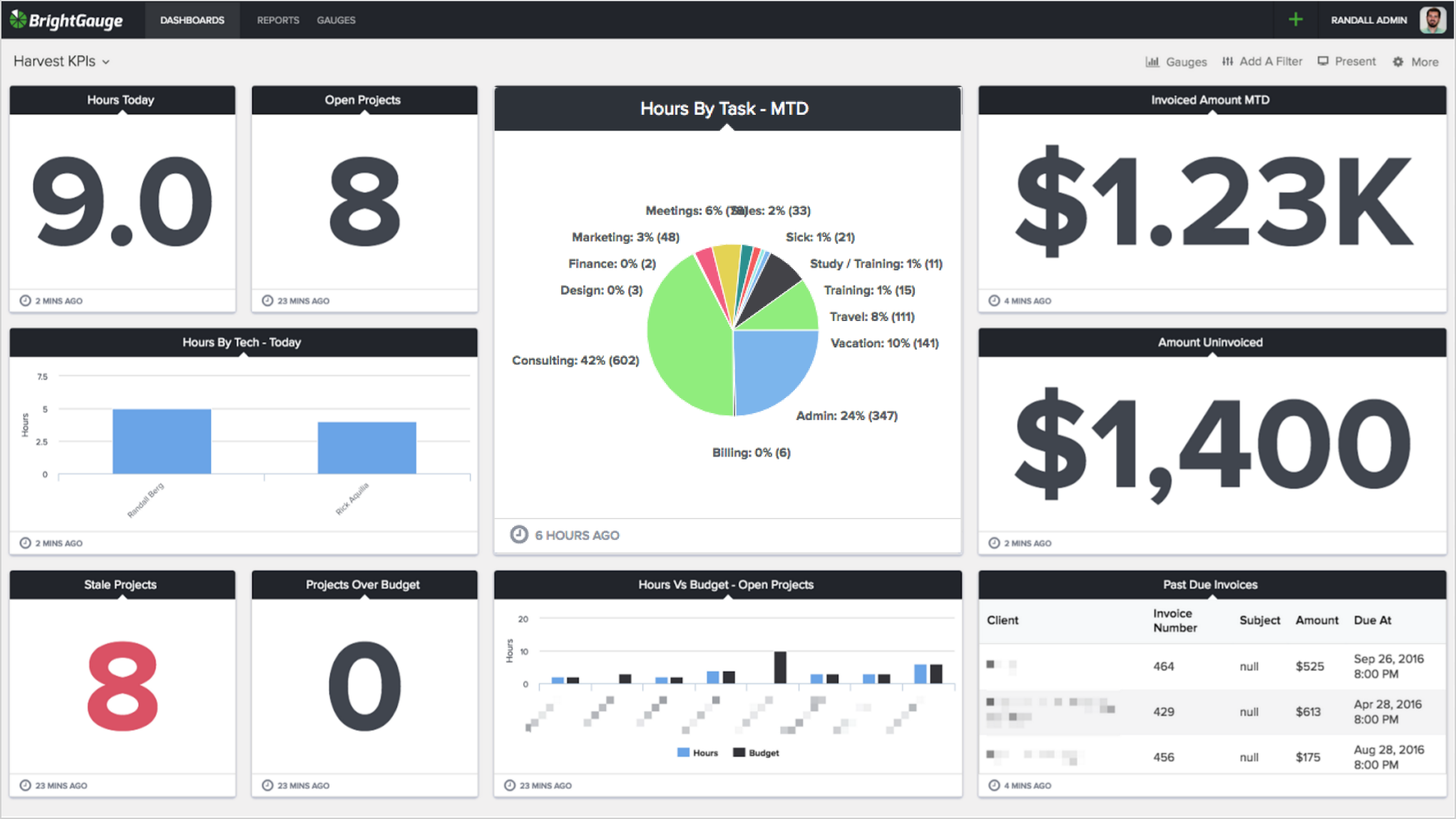If you’re not surprised by these 3 facts, nothing will faze you: 80% of your future profits will come from your most loyal customers (about 20% of your customer base) An increase in customer ...
If you’re not surprised by these 3 facts, nothing will faze you: 80% of your future profits will come from your most loyal customers (about 20% of your customer base) An increase in customer retention of 10% increases the value of a company by 30%. Increasing customer retention by just 5% can increase profit by as much as 95% Those facts, as reported in this CMO article, give you an idea of how powerful customer satisfaction (CSAT) is. In other words, CSAT data can help you grow exponentially, if you understand it and use it the right way. Everything needed to track CSAT is in Zendesk, and with a little tweaking, you can be improving your scores in no time. Here’s how to use Zendesk to track and improve CSAT: How to Enable Zendesk’s CSAT Feature Follow this guide to enable and customize Zendesk’s built in CSAT feature. You won’t be able to change the actual survey much, but that’s okay. Zendesk’s default survey has been well optimized and follows best practices. Their survey has an average open rate of 21%, which is great! Once you’ve enabled the feature, or if you already have it enabled, proceed on to the next step. How to Improve Your CSAT Score Understand the Purpose of CSAT One thing to always keep in mind is that CSAT is not about what you want to know. It’s about what your customer wants to share with you. In other words, CSAT is a feedback channel for your customers. The feedback you receive from them is important, and you should set aside time to review their comments regularly. Share Feedback with the Team At BrightGauge, we’ve got a channel in our team’s Slack messaging app, which we use to share customer feedback we’ve received. Sharing feedback has helped us see which features our customers get excited about, praise team members for great customer service, and understand what we could be doing better. It also provides a big increase in transparency. Here’s what it looks like: Your company can experience the same benefits by sharing customer feedback. If you are not sharing feedback yet, we highly recommend it. React Quickly We’re not talking about response times, although those are important too! We are referring to how soon you identify and respond to trends and changes in CSAT scores. Are your scores down after a change in procedures? Do you notice that a customer’s CSAT drops off after 6 months? These are the types of changes you should be able to identify. You need to be able to check your CSAT in real-time. You also need to be reviewing your data on at least a weekly basis, but preferably more often. Look for changes, trends, and exceptions when you're checking your data. Making decisions with these things in mind will result in an increase in service team efficiency and company success. Service Success with Zendesk and BrightGauge We mentioned how important it is to track your data in real-time, and there’s no better way to do that than with dashboards. Monitoring your data on dashboards allows you and your team to react faster to changes in your data. You can even look at historical data to identify and observe trends. With this, you can make proactive decisions and predict changes to workload like the number of tickets a new client will add. Displaying your information on dashboards around the office will improve your team’s performance. They’ll be able to look up and see where they stand in relation to company goals, increasing productivity, and how their individual contributions truly impact the business. One of the biggest benefits of using our integration is the ability to combine data from different data sources onto one dashboard. This gives you a full view of your business and enables you to make better decisions. It also helps you track how changes in support metrics impact other aspects of the business, such as churn. Check out our recent Zendesk integration announcement to learn more about how it can help you improve your service team. Bonus: Improve CSAT with Video Support One idea we’ve used to drastically improve customer satisfaction is to send video clips for responses in support. Kristian, our Customer Support Specialist, began including them in our support responses not too long ago. His reasoning was that he’s a visual learner and he believes most others are as well. Since implementing, we’ve consistently gotten feedback like this: And this: Video support was incredibly easy to implement and the results have been nothing short of fantastic. Read more about how Kristian revolutionized our approach here. Ready to learn more about about customer satisfaction? It all starts with making sure that you’re doing business with your ideal customers. Check out our free webinar featuring Richard Tubb, former MSP Owner turned Consultant:

Help us give a warm welcome to the newest member of our team, Ashley! The Early Days Ashley was born and raised in Miami, a very common trend among the BrightGauge crew! As it turns out Ashley attended the same local high school, Doral Academy, as three of our other teammates (Kristian, Stephen, and Felipe) before enrolling at Florida International University where she would earn her BA in Sociology/Anthropology with a minor in Asian Studies. After college, Ashley worked in a handful of other businesses focusing on administrative and bookkeeping work, which means that she brings a great deal of experience to our growing organization. First, she established herself at a local contemporary art gallery, Art Center South Florida, and then Ashley spent time with a family law office before accepting a role as Office Manager for an assisted living facility management company. Her next position was Senior Bookkeeper for her husband’s bookkeeping business, and the rest, as they say, is history because then Ashley heard about an opening at BrightGauge. Joining the BrightGauge Crew Ashley was first drawn to the BrightGauge team because we’re a family-owned company that places a ton of importance on maintaining a culture that emphasizes having fun, building an awesome product, and constant learning - while also making sure that our crew can easily balance work and personal time. She also loved the fact that we talk constantly about the importance of our customers and ways that we can help them succeed in their respective businesses by showing them the value of their data. When we asked Ashley what she’s most excited about when it comes to joining our ranks, she told us that she’s really looking forward to “helping streamline BrightGauge processes as the company grows.” She goes on to say “I want to support and keep the cogs turning here so that we can keep growing.” Outside the Office When she’s not helping us to stay organized and running smooth, Ashley enjoys reading, spoiling her dogs, going to concerts, and checking out new activities with her husband and friends such as operas, plays, musicals, museums, bars, breweries, wineries, and more. She also loves traveling, kayaking, going to Disney World, Japanese culture and learning the Japanese language. Join us in welcoming Ashley to the BrightGauge team!

Metrics are important at every level of a company, but nowhere else is this more apparent than in customer service. That’s why every support role should be constantly monitoring customer service metrics, whether that be in the form of a dashboard or a report. One of the most difficult parts of monitoring customer support data is knowing which metrics to monitor in the first place! To help you decide, here are the metrics that we track at BrightGauge: Customer Support Metrics for the Whole Team At our HQ, we’ve got some of our most important customer support metrics displayed on a wall-mounted dashboard. These metrics are more of an overview than a detailed look, and help to give team members an idea of their performance at a glance. We use: Open Tickets by Assignee - this helps create some healthy competition and give team members an idea of where they stand. Tickets by Week (Last 13 Weeks) - provides a historical context for data and helps to identify trends vs. isolated incidents. New Tickets - the biggest number on our dashboard, New Tickets provides a quick look at how many tickets have not yet been triaged. Open Tickets by Type - this number provides an at-a-glance look at both your customer support team’s performance and which types of tickets are being held up. Unsolved Tickets by Type - another metric to quickly gauge your performance and potential bottlenecks. Kill Rate - allows you to make sure you're at or near a 0 backlog (or the weeks where you're making up for down weeks). Having metrics for the whole team is great, and is definitely a necessity, but it doesn’t end there. You also need to get more detailed with metrics for your Team Manager and Reps. Customer Support Metrics for your Engineers Jessica, one of our Customer Support Specialists, monitors metrics on both a daily and a monthly basis. On a daily basis, she constantly keeps an eye on the New Tickets gauge while at her desk to track those that have yet to be acknowledged. In addition to that metric, she tracks the following metrics on a monthly basis: Number of Tickets Opened - provides quick insight into trends and allows prediction of ticket load next month. Number of Tickets Closed - provides quick insight into how the team is handling the ticket load and whether additional resources will be needed. Kill Rate (Closed/Opened) - a combination of the above gauges to provide even more insight into workload, resources and performance. Average Response Time - helps keep an eye on any SLAs and identify any potential bottlenecks. Average Customer Satisfaction - based on surveys, this gives insight into how pleased customers are with our service. Picking your Support Metrics Not every company or team is the same: you may be structured differently or be simply using different data sources. That’s why it’s important to choose which metrics are important at each level of your service team. You’ll know you got it right when you begin to see performance increases in the areas you’re tracking! Ready to learn more about how to improve your business with the right metrics? Download our free guide on Key Performance Indicators:

We talk a lot at BrightGauge about transparency, trust, and communication. Those principles are foundations for our own team and operations, but we also advise our customers about why they should adopt these 3 standards. At our sister company and MSP, Compuquip, we learned a lot about how far a business relationship can go when it’s built on trust, and we built that trust by offering our clients complete transparency through plenty of communication. How to be transparent with your clients To be truly transparent, you have to share everything with your clients. Think about it this way: once the contract is signed, your clients don’t consider all the work your team is doing day in and day out to make sure that everything is working properly. As a matter of fact, they probably only think about you when something isn’t working and they put in a ticket for your team to fix. That’s why you should be sending them a monthly summary of everything you do - tickets resolved, problems avoided by your constant monitoring, the number of hours you spent doing the work, and more. What you can achieve with monthly Client Reports Client reports serve two main purposes. First, a report is your chance to show each client how much value your work brings to their business. It’s an easy way to show them what you’ve accomplished for the month. Second, reports are the best way to show your clients where you dropped the ball and need to improve for next month. Wait, clients should see mistakes highlighted every month? Absolutely. We realized at Compuquip that by being open about our shortcomings, we had to immediately be prepared to explain what steps we would implement to make sure the same mistake wouldn’t happen again. What we realized during this process is that by being open and honest, our clients came to trust us more. They realized that we’re human, we’re all capable of missing the mark from time to time, and they liked to know that we already had a plan in place to make sure it wouldn’t happen again. How to get started with Client Reporting There are a few things to keep in mind when it comes to creating your client reports: Make sure your reports are being sent to the right people Include the right information in each report Send the reports at the right time Keep reports personalized for each client Next steps after client reporting Want to learn more about these 5 tips for getting started with Client Reporting? We’ve put together a free, 13-page guide on Best Practices of Client Reporting. Click here to download your copy:

Last week I shared about the main driver of our 60%+ growth in 2016 which you can check out here. After the post, we got a lot of questions about the specifics of our Data Driven approach to growth so we decided to sneak in one more webinar before the end of the year and share all of our secrets. During the webinar I’ll share the specific things we did to drive our growth and they all tie back to a data driven approach. Goals - We kicked off the year with a rigorous approach to setting and working towards our goals. This approach allowed us to sync the entire team with our company goals and then break down the goals for individuals to be able to contribute. Accountability - The main driver for our new Scorecards Feature was our need to help hold our team accountable for hitting their goals. Using scorecards was the only way for each team member to “own a number” that impacts our growth and to be able to visualize how they are performing over time. Cadence - The regular cadence of our weekly meetings where we reviewed our KPIs (from our Scorecards) and progress on our Goals was the game changer and really drove the accountability home. We’ll share what our meeting frequency is and how we structure our meetings. Getting Your Team Involved - We’ll also talk about how we got each of our team members involved, from the Co-Founders, down to the newest employee. This was not easy and took some time to perfect but we found the right formula that works for us and we think the same formula can work for any small to medium business. There’s a lot more we will cover but these are just some of the main highlights with the purpose of giving you practical takeaways that you can implement in your business immediately. If you missed the live webinar, you can still access the free, recorded version...

70+ Metrics for MSPs
Key metrics and accompanying formulas to help MSPs skyrocket growth and success!
Get your KPIs

A Swedish fiber broadband provider did an experiment in which they had 4 people do everyday tasks while wearing a virtual reality headset. The headset would use a camera to show them everything they would normally see, with a slight delay. It’s an amusing way to show what happens when you see things with a time lag - each participant failed at everyday tasks because they weren’t seeing the world around them in real time. Why then, do people expect to successfully manage a customer service team without real-time metrics to guide them? Since tracking metrics in real-time is one of the most important parts of managing a successful team, we’ve put together a list of the top 4 benefits of monitoring live Zendesk metrics throughout the day: 1. You Will Understand How Your Support Team Is Performing Without real-time metrics, you’ll never understand how your support team is performing. Only how they have been performing. There’s a big difference between those two scenarios. It’s like driving a car by only looking in your rear view mirrors. Sure, you may drive for a little without crashing, but you’re bound to crash the second something unexpected happens. Using real-time metrics allows you to see both what’s in front of you and behind you. By monitoring how your team is performing in real-time, you are able to correct course much faster if you happen to stray from your targets. It also enables you to better predict what will happen in the future by combining current data with historical data. You’ll have a better understanding of how your support team is performing. Additionally, you'll better manage and correct your team when they aren’t performing well. 2. You Can See Where Tickets Are Getting Stuck in the Process It can be tricky to identify where tickets are held up during the support process. There is almost always one or two bottlenecks in the ticket process. A bottleneck could be something your team needs to work on, or it could be the result of your customer's actions. Our sister company, Compuquip, identified two bottlenecks by using real-time data. The first was in the way that customers submitted tickets. Customers would submit tickets via phone, which slowed down the process. They also noticed that their engineers were not triaging tickets effectively. By fixing their two bottlenecks, Compuquip lowered their response time to under 8 minutes. 3. You Will Identify Problem Customers Early with Repeat Ticket Openers There's always one problem customer who your whole team knows by name. Some teams are luckier than others, and it takes them a while to identify who that problem customer is, but every team finds their problem customer eventually. Although when you monitor your metrics in real-time, you won’t need to wait to identify problem customers because you’ll see the data almost instantly. Identifying problem customers early will allow you to identify opportunities to train a customer. This can go a long way in protecting your service team's valuable time. 4. You Can Track How Fast Your Team Is Responding When it comes to responsiveness, we can’t stress the importance enough. The response time of your customer service team can cause a company to sink or swim, because just one dip in responsiveness could result in lost customers. Check out these eye-opening metrics (pulled from a previous blog): Failure to resolve an issue quickly is one of the top 2 reasons for a customer loss. 41% of customers expect a response within 6 hours, and 24 hours is often considered the maximum acceptable response time. Tracking responsiveness in real time enables you to speed up your team’s support right away. You'll be able to prevent your team from slipping on response time in the first place as opposed to realizing and addressing the issues weeks later. with a service ticket dashboard, it's easy to monitor your metrics in real time The Best Way to Track Zendesk Metrics in Real Time There’s no better way to monitor metrics in real time than with BrightGauge and Zendesk together. Using both dashboards and automated reports in one simple solution allows you to display all your key metrics for everyone to see - a surefire way to encourage your team to rally around your company’s goals!

Get to know the newest face at Team BrightGauge, Felipe Donoso... The Early Days Felipe Donoso was born in Guayaquil, Ecuador, to a family blended with Syrian and Spanish roots. At the age of 6, he moved to Miami with his family, and throughout his childhood years, the family would move back and forth between Guayaquil and Miami each year until around the time Felipe turned 12. All of the moving turned out to be a great way for Felipe to really polish his language skills and as a result, he’s fully bilingual - English and Spanish, of course! Like two other BrightGauge team members, Kristian and Stephen, Felipe attended high school at Doral Academy in the Miami area. During that time he started working seasonally in retail with the Hurley brand, before moving forward as Sales Lead, a position that earned him recognition as the youngest person to hold a management position in the brand’s fleet of stores at that time (all while still attending high school). His days at Hurley showed Felipe just how much he loved sales. In particular, he loved to see customer reactions when visitors would take note of a different experience in his store than what they were familiar with at other stores under the same brand name... the effects of a personalized approach to retail operations. Felipe also enjoyed the chance to connect with people of many different nationalities in the retail world, noting that his interest in languages often made it easy to for him to connect with shoppers. After his 3 years with Hurley, Felipe moved to the Billabong retail brand as Assistant Store Manager. One of his first projects to help enhance the overall consumer experience in his store was to start a customer service and sales guide that would make it easier for his team to become true brand ambassadors instead of following the typical mechanical method often found in retail stores. While he enjoyed his time in retail, Felipe was ready for a change, and that’s when he found BrightGauge… Joining Team BrightGauge Once Felipe heard about the opening for Sales Development Rep on our team, he was “immediately sold.” During the interview process, Felipe met quite a few of our team members and had the opportunity to learn more about what drives our team, our goals and ambitions as a company, and the MSP industry as a whole. Felipe knew BrightGauge was the opportunity he had been looking for and he was excited to get started in a new industry because he realized that BrightGauge would be the perfect place to continue growing his career. He tells us that he’s thrilled to have an opportunity to make a strong impact on our company, and we can’t wait to see what Felipe will accomplish on our team! Outside the Office When Felipe isn’t rolling up his sleeves to learn all about BrightGauge and the world of business intelligence, he loves to spend his free time being active with activities such as soccer, Crossfit, and longboarding. He’s a huge fan of Liverpool FC (soccer) and tells us they’re the best team in the world. He also enjoys spending time watching documentaries and searching for new music to add to his collection. We can’t forget to mention Felipe’s huge interest in learning more about the world, as he’s fascinated by different cultures and ways of life. Join us in giving Felipe a big BrightGauge welcome!

Harvest offers time tracking, expense tracking, and invoicing software to tens of thousands of businesses, and we’re excited to make it easier for those businesses to track their expenses and hours. Never miss out on an hour of billable time again with BrightGauge and Harvest! Our Harvest integration gives you the ability to track and manage your hours, expenses, and invoices in real time. Not only will you save time for yourself, but you’ll also ensure that no details are missed! Here are a few of the key metrics you can track with a Harvest dashboard: Hours vs Budget helps you track your team’s progress on all projects. Amount Invoiced helps you keep track of all the invoices you sent out this month. Amount Uninvoiced helps you keep track of the work you’ve done, but not yet invoiced. If you’re a Harvest user, then the ease of the product speaks for itself, but here’s what BrightGauge customers have to say about the integration: “Any Harvest user should use BrightGauge. It’s a no-brainer. The access to the data that BrightGauge provides is leaps and bounds above what they provide organically,” explains Evan Jones, CEO of Jones IT (read the complete Jones IT case study here). The Harvest integration comes in addition to the sales, support, financial, CSAT, and other data that you can already view in your BrightGauge. In other words, you can get a full view of the metrics that help you run your business, in one place. You no longer need to log into all those separate sources to compile reports and view data for meetings!

Rex Frank founded Sea Level Operations with the core purpose to “Coach IT Managed Service Providers on achieving operational excellence.” With 23 years in the industry under his belt, Rex coaches based on the lessons he’s learned first-hand while moving through the levels from Tech to Director of Operations at a handful of Service Providers. We sat down with him for a conversation on growing and scaling an MSP to maturity, recommendations for service gross margin, and a closer look at the life of a ticket. Coaching Through the Stages of MSP Maturity: Episode Highlights Rex’s introduction and background (0:55) The typical size and scope for a MSP working with Sea Level Operations (6:32) What is it that sparks MSPs to reach out to a service like Sea Level? (7:51) Trends, challenges, and themes Rex is currently seeing in the market (12:47) The Top 5 biggest mistakes MSPs are making when it comes to operations (18:47) 3 concepts that fix a financial problem (26:55) Rex’s target recommendation for service gross margin (29:12) Best in class when it comes to bottom-line for MSPs (34:18) The 4 levers in service gross margin (35:41) Life of a ticket & the utilization lever (39:02) Q&A: best business book, resources to improve as an Executive, parting advice for MSPs, and how to reach Rex (48:44) Books as referenced in the episode: The E-myth Revisited: Why Most Small Businesses Don’t Work and What To Do About It by Michael Gerber Traction: Get a Grip on Your Business by Gino Wickman Want to find out more about The BrightGauge Podcast? Check out all the episodes here.

When it comes to managing a Service Team, every MSP business has their own unique operations, policies, and procedures. But there are also quite a few best practices that we hear our customers talk about from time to time, and we decided it’s time to put those ideas in the spotlight! Our informal panel of experts was made up of Karl Fulljames, VP of Operations at Nucleus Networks, Nick Olerud, Director of Technology at Netrix IT, and Simon Smith, Operations Manager at Air-IT. We asked each of them to share a few gems of advice out of their day to day management techniques, and here’s what they had to say: 1. Transparency is Essential Having the ability to do automated reporting and dashboards makes it easier than ever to keep clients in the loop when it comes to the work that the Netrix team is in charge of every day. And as Nick explains, clients love the transparency that comes as a result of reports and dashboards, and they’re excited that Netrix can produce any of the data they want to see. In fact, the transparency factor is a major differentiator when Netrix meets with prospective clients who are shopping for a MSP solution because the dashboards hanging around their office attest to the level of service that they provide. Nick goes on to say that “transparency also makes conversations with clients much easier if there is a bad week or day because they can see the overall trend of good service. It’s easier for clients to understand that mistakes happen and no one is perfect.” When it comes to his service team, transparency resulting from reports and dashboards also helps to show if his team is struggling to keep up or needs additional training. If the data shows that the team is up to par on their service but there are still delays, then it’s easy for Nick to see when it’s time to hire additional team members. Learn more about Nick's best practices for driving efficiency and managing his service team. “Dashboards have gamified our work, especially the leaderboard gauge. It really sparked some competition in the team - they want to get that little medal next to their name and keep growing. We do a lot of gamification of things at Netrix, so that really fit well with our culture and they have embraced the transparency. They take a lot of pride in their numbers,” explains Nick. An example of the leaderboard gauge with medals 2. Implement an Escalation Process When it came to resolving tickets, Simon and the team at Air-IT noticed that some of them seemed to get stuck in the workflow, while others were quickly settled. To help standardize ticket resolution times, Simon implemented a system with a time limit on how long technicians should hold on to a ticket before it is escalated. As Simon explains, creating an escalation process “is also a way of making sure people have skills and knowledge to deal with issues before they pass it along.” When tickets are escalated, it’s an easy reminder to review and evaluate whether or not there is a need for additional employee training. Additionally, Simon put a process in place where his team calls clients at two points during the day to ensure they are properly kept up to date and to ensure that Air-IT isn’t missing any important updates. As a result, Air-IT noticed a large reduction in the number of incoming phone calls, particularly in the afternoon. By preempting the wave of calls, more resources are free for other tasks, and as a result there has been an improvement in CSAT scores. Tracking CSAT alongside your other metrics is simple with Customer Thermometer 3. Pick the Right Metrics for Your Team Picking the “right metrics” will look a bit different for every MSP team, depending on your KPIs. We’ve talked before about how to choose the most powerful KPIs for your organization, but our panel clued in us on some of the metrics that are most important to them, as well as some of the metrics that they caution other MSPs to think twice about: Karl was quick to point out that metrics aren’t everything, but they do help to improve and highlight things that need to be done. For example, he explains that every service team will have members who are problem solvers by nature - people who are willing and even excited about digging into a complex ticket and seeing it through to the end. On the other side of the coin are team members who prefer to solve numerous quick tickets throughout the day. That’s why when it comes to deciding how you will measure your team’s success, and in many cases how you will also reward them, “you need to choose the metrics that will best motivate each person,” Karl explains. He gives an example with “total ticket count per tech could easily turn into a metric that pushes some on your team to ‘cherry pick’ the tickets they want to work on, because they’re looking for the tickets that are easiest to solve. Meanwhile, the teammate who only had 3 tickets in a single day may have a larger effect on the big picture because they solved the root problem that will avoid 18 additional tickets from being created.” So what about metrics that you should consider using? For technicians, Nick likes to use time utilization so that he can see where they are spending the most time. In some cases, ample amounts of time spent on one ticket could be a red flag that the tech needs more training on a particular topic. Nick goes on to say “For our project team, we want to see how much billable work they are doing in a week. We have a percentage of their time that must be billed each week that will go on top of our recurring revenue. Now it’s easy on a daily or weekly basis to see how much of our time is spent on billable. It keeps us on top of our numbers so that at the end of the month, nothing has fallen through the cracks.” For Simon’s team at Air-IT, there is a particular focus on the 6 KPIs that are a brand promise to all their customers, which can also be found updated on the company’s website each month. With dashboards on the wall near their service desk, they keep an eye on Average Waiting Time, Reactive Tickets Closed, Same Day Fix (Calls), Same Day Fix (All Sources), Overall SLAs Met, and Client Satisfaction. 4. Reports Can Be Used Internally Reporting is two-fold: most MSPs are familiar with the idea of client reporting, but there are also more and more MSPs who utilize internal reports for their teams. Internal reports can serve as a nice supplement to dashboards. Service Team members can easily see when there are items that need attention or a quick resolution, whereas leaders and executives can use reports to track resources. As Karl relays to us, reports make it easy to see which clients are in excess of their SLAs and then the Service Manager can take next steps accordingly: “It’s much easier to collect more money when you have the proof of what the team is actually doing that is outside SLA agreement, or when there are problems caused because the client didn’t move forward with recommendations (such as new hardware). The reports help to generate revenue, and also free up techs to focus on other paying clients,” says Karl. 5. Share CSAT Results with Clients Each month, the team at Nucleus Networks reports back to every client with an assessment of good, bad, and neutral ticket responses. Not only does it highlight the obvious service aces, as well as areas that need to be improved, but it also demonstrates Nucleus’ level of service consistency. As Karl explains, their clients love to see how their team is treated across the board when they call in - not just VIP treatment for executives, but quick resolutions for their entire team. “At the end of the day, an executive who gets fast help may not be the right primary focus if their support level team who are ‘in the trenches’ so to speak are not also getting the same level of help,” explains Karl. Our SmileBack integration makes it easy to share positive, neutral, and negative customer reactions Conclusion While there is no exact formula for managing a Service Team, there are a handful of general ideas that we hear over and over from our customers: Transparency is essential for teams and for clients Put an escalation process into place Choose the best metrics for your team Create reports for internal use Share CSAT feedback with clients Learn more about best practices for managing a service team by downloading the free webinar that we co-hosted along with Nick Olreud of Netrix IT:

“Customer silence isn’t always golden.” In our conversation with Lindsay Willott, co-Founder and CEO of Customer Thermometer, we take a closer look at what customer satisfaction really is, and why every company should be monitoring the metrics tied to it. After all, “just because customers are quiet, it’s not safe to assume they are happy.” From implementing customer surveys to the benefits of tracking customer satisfaction (CSAT), and tips on how to increase survey responses 10x, Lindsay unveils some of the most important things to know about finding value from a simple one-click survey. Benefits of Customer Satisfaction Surveys: Episode Highlights Lindsay’s introduction and background (0:56) The story behind launching Customer Thermometer (4:36) The types of companies who work with Customer Thermometer (6:32) The main challenge with customer satisfaction surveys (8:58) The evolution of the CSAT industry (11:29) Where do customers find the most value with Customer Thermometer? (14:16) How is the CSAT feedback used once collected? (17:06) Achieving a 10x increase in survey engagement (23:05) Highlighting areas of improvement/training for employees using CSAT (24:49) The process from implementation to collecting surveys using Customer Thermometer (27:59) Coming soon at Customer Thermometer (30:09) Q&A: Best business book, resources for professional improvement, parting advice, how to reach Lindsay or get a free trial of Customer Thermometer (32:17) As mentioned in the episode: Book: The 4-Hour Workweek, by Timothy Ferriss Book: Black Box Thinking, by Matthew Syed (find Lindsay’s book review here) Customer Thermometer’s CSAT blog The One-Page Plan (and other growth tools from Verne Harnish) Case study: HiTech Computers interview on how they’ve integrated Customer Thermometer into ConnectWise and their business How to cut your client attrition rate in half… in 2 months Want to find out more about The BrightGauge Podcast? Check out all the episodes here.












